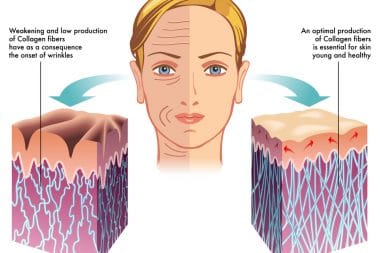Regenerative medicine deals with tissue engineering tissues and molecular biology. In a nutshell, it is the process of replacing the cells in the body that are known as “regenerating” human cells. It is unlocking the regenerative capabilities of the human body. When your cells are no longer functioning as they should, adding new cells can stimulate the repair mechanisms of the body. This process aids in growing back tissues or complete muscles lost due to injury or illness.
The function of the particular medicine is to replace the damaged cells by newer and younger cells. This plays a role in encouraging the body to heal itself. So, in this way, it contributes to better and advanced recovery for a patient suffering from trauma, illness, or any other serious injury.
Phoenician Foot and Ankle Specialists, a Podiatry clinic located in Scottsdale, AZ and owned by Dr. Nima Sana uses regenerative medicine frequently to treat patients for sports injuries and many other common ailments. Numerous studies and Dr. Sana reveal that regenerative medicine can sometimes replace damaged tissues and muscles without the need for surgery. Plus, this treatment can be useful for curing patients suffering from “plantar fasciitis,” “Achilles tendinitis,” and other conditions of the feet and ankles.
What’s the reason for opting to use regenerative medicine?
Doctors are using regenerative medicines because it reduces the need for surgery, and the treatments are becoming more and more effective. As a result, it reduces the cost of the operation, and it allows for faster and more effective healing, allowing the patient to return to regular activity quickly. Insurance companies, doctors and patients always want to avoid surgery if possible, and if there are other options that are just as effective and cost less, those options will almost always be the preferred route. Unfortunately, not many insurance companies cover the costs for injections, but if more research and studies surface backing up the success of this treatment option for foot and ankle injuries and disorders that will likely change.
There are two main types of regenerative medicine treatments
Platelet-rich Plasma Therapy:
The therapy relating to platelet-rich plasma reduces the red blood cells with the use of injections. As a result, it increases the rate at which your body heals. The therapy is effective for foot and ankle conditions as it increases the rate at which your body repairs the particular muscle or inflammation condition. By injecting platelet-rich plasma, the thickness in the heel and inflammation of Plantar Fasciitis diminishes, bringing relief quickly and effectively.
This therapy is also used for the majority of some of the renowned athletes when they offer a slight displacement of their ankle or toes, especially basketball players. Thus, the therapy is used in the form of injections, within which they quickly recover within no time.
Thus, platelet-rich plasma also serves as regenerative medicine.
Amniotic Cell Therapy:
This therapy in podiatric medicine treats a wide variety of conditions, including:
- Achilles tendinitis,
- Chronic heel pain,
- Plantar fasciitis,
- Foot ulcers
- Ruptured tendons.
Extracted Amniotic cells from the fluid, placenta, and umbilical cord after live cesarean birth are used in this procedure. These tissues then go to a donor bank where they undergo a rigorous screening process under the guidance of the American Association of Tissue Banks and the FDA. With continued research into this field, some believe that we can use this technology to replace organs in the future.
Is Regenerative medicine something you or a loved one should consider for foot and ankle injuries or chronic conditions?
Many disorders are responding well to regenerative medicine. For the past two or three years, regenerative medicine is one of the best solutions related to feet and ankle injury and disease. With the use of this particular therapy, painful surgeries will be a thing of the past.
However, regenerative medicine doesn’t work for everyone. There is a screening process, and a tissue sample of a patient is taken and tested under specific conditions. If the tests are thriving under the required conditions, regenerative medicine can be to the patient. Sometimes other disorders make this treatment option unavailable. It’s best to talk with your doctor and consider all your options.
If it is right for you regenerative medicine is the perfect alternative for the patients who are willing to undergo the procedure once it is determined they are a candidate.
Is Regenerative Medicine Right for You?
If you’re interested in learning more about regenerative medicine, schedule an appointment with Dr. Sana. He will explain your options to help you determine the treatment path that’s right for your unique needs. Call 480.253.9996 to schedule your consultation today.
- A detailed list of your symptoms, i.e. pain, swelling, bruising, instability, tenderness, etc.
- A list of previous foot and ankle injuries
- Details about your recent injury, including how it happened, where it hurts, which way the ankle turned, and whether your foot can bear your weight
- Treatment received for previous injuries and whether it was effective
Finally, create an inventory of all prescription and over-the-counter medications you’re taking, including dosage. Your list should include supplements and vitamins.
See also: https://www.nature.com/subjects/regenerative-medicine








Reply